Jan Modersitzki
Accelerating the Registration of Image Sequences by Spatio-temporal Multilevel Strategies
Jan 18, 2020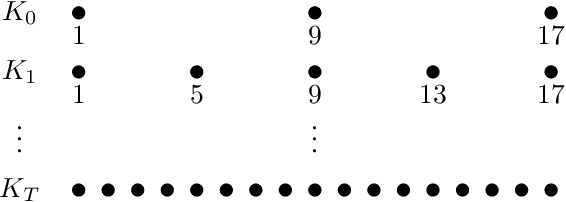
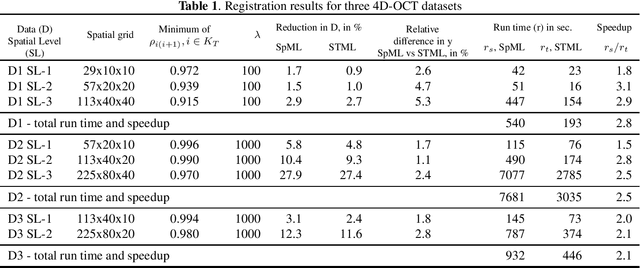
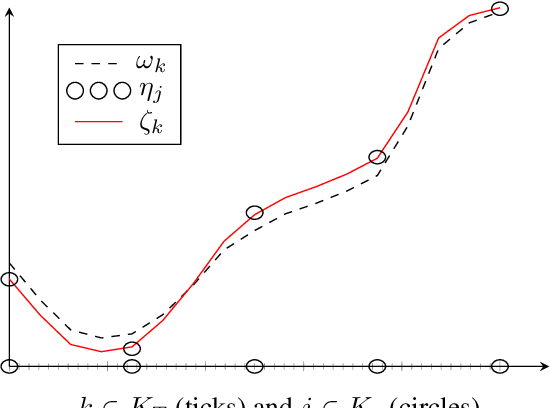
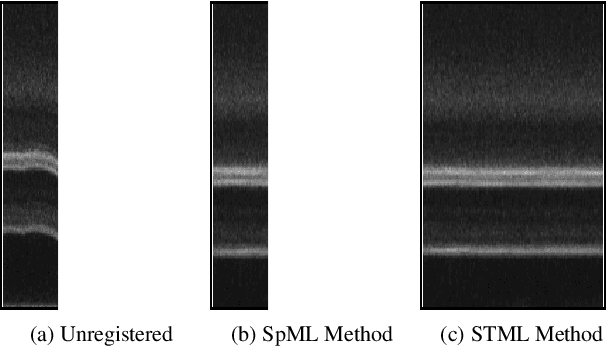
Abstract:Multilevel strategies are an integral part of many image registration algorithms. These strategies are very well-known for avoiding undesirable local minima, providing an outstanding initial guess, and reducing overall computation time. State-of-the-art multilevel strategies build a hierarchy of discretization in the spatial dimensions. In this paper, we present a spatio-temporal strategy, where we introduce a hierarchical discretization in the temporal dimension at each spatial level. This strategy is suitable for a motion estimation problem where the motion is assumed smooth over time. Our strategy exploits the temporal smoothness among image frames by following a predictor-corrector approach. The strategy predicts the motion by a novel interpolation method and later corrects it by registration. The prediction step provides a good initial guess for the correction step, hence reduces the overall computational time for registration. The acceleration is achieved by a factor of 2.5 on average, over the state-of-the-art multilevel methods on three examined optical coherence tomography datasets.
Variational Registration of Multiple Images with the SVD based SqN Distance Measure
Jul 23, 2019
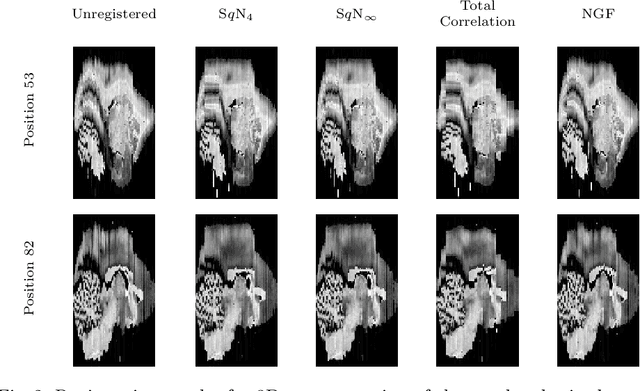
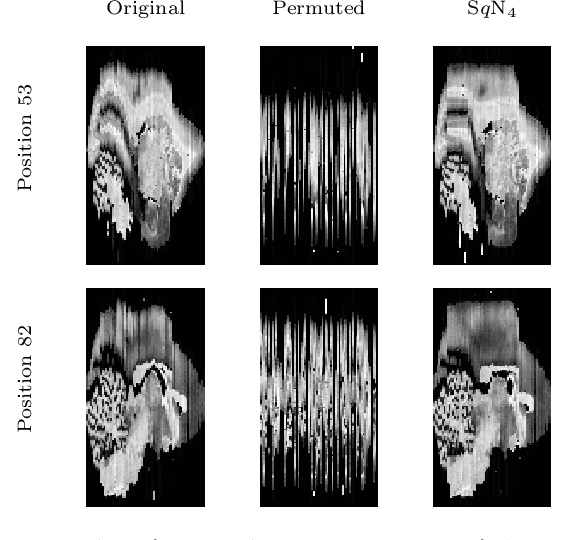
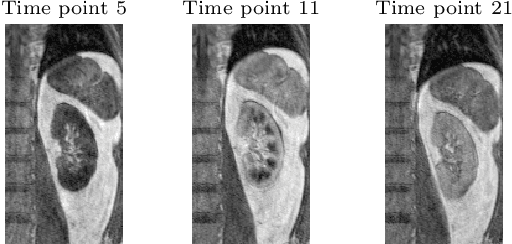
Abstract:Image registration, especially the quantification of image similarity, is an important task in image processing. Various approaches for the comparison of two images are discussed in the literature. However, although most of these approaches perform very well in a two image scenario, an extension to a multiple images scenario deserves attention. In this article, we discuss and compare registration methods for multiple images. Our key assumption is, that information about the singular values of a feature matrix of images can be used for alignment. We introduce, discuss and relate three recent approaches from the literature: the Schatten q-norm based SqN distance measure, a rank based approach, and a feature volume based approach. We also present results for typical applications such as dynamic image sequences or stacks of histological sections. Our results indicate that the SqN approach is in fact a suitable distance measure for image registration. Moreover, our examples also indicate that the results obtained by SqN are superior to those obtained by its competitors.
Estimation of Large Motion in Lung CT by Integrating Regularized Keypoint Correspondences into Dense Deformable Registration
Jul 02, 2018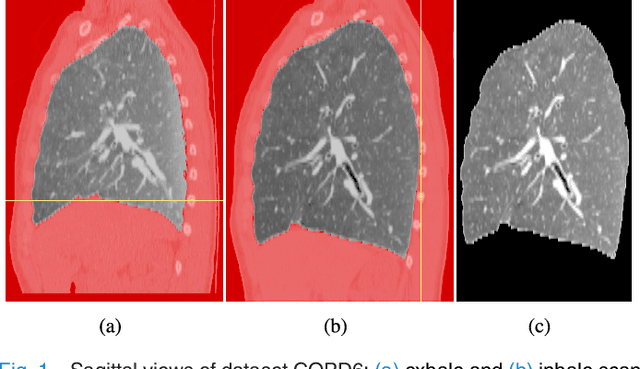
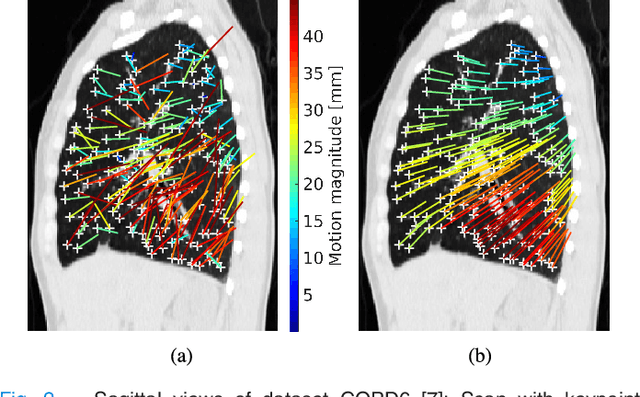
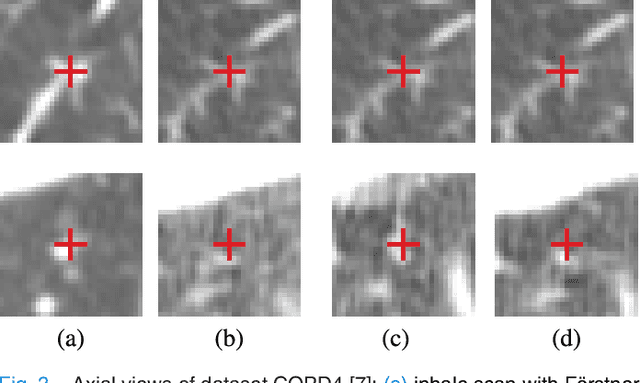
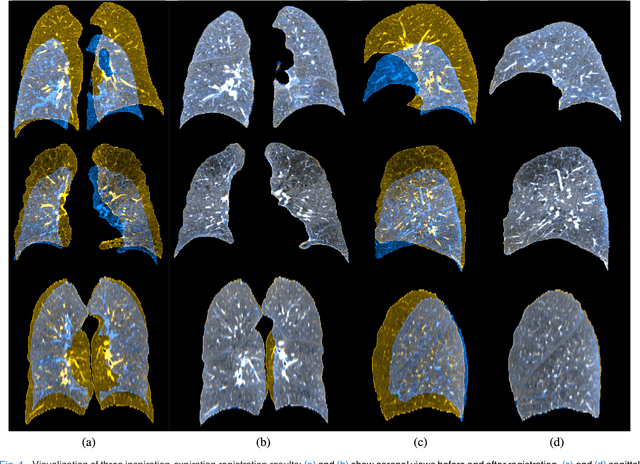
Abstract:We present a novel algorithm for the registration of pulmonary CT scans. Our method is designed for large respiratory motion by integrating sparse keypoint correspondences into a dense continuous optimization framework. The detection of keypoint correspondences enables robustness against large deformations by jointly optimizing over a large number of potential discrete displacements, whereas the dense continuous registration achieves subvoxel alignment with smooth transformations. Both steps are driven by the same normalized gradient fields data term. We employ curvature regularization and a volume change control mechanism to prevent foldings of the deformation grid and restrict the determinant of the Jacobian to physiologically meaningful values. Keypoint correspondences are integrated into the dense registration by a quadratic penalty with adaptively determined weight. Using a parallel matrix-free derivative calculation scheme, a runtime of about 5 min was realized on a standard PC. The proposed algorithm ranks first in the EMPIRE10 challenge on pulmonary image registration. Moreover, it achieves an average landmark distance of 0.82 mm on the DIR-Lab COPD database, thereby improving upon the state of the art in accuracy by 15%. Our algorithm is the first to reach the inter-observer variability in landmark annotation on this dataset.
* 12 pages, 7 figures, \c{opyright} 2017 IEEE. Personal use is permitted, but republication/redistribution requires IEEE permission
 Add to Chrome
Add to Chrome Add to Firefox
Add to Firefox Add to Edge
Add to Edge